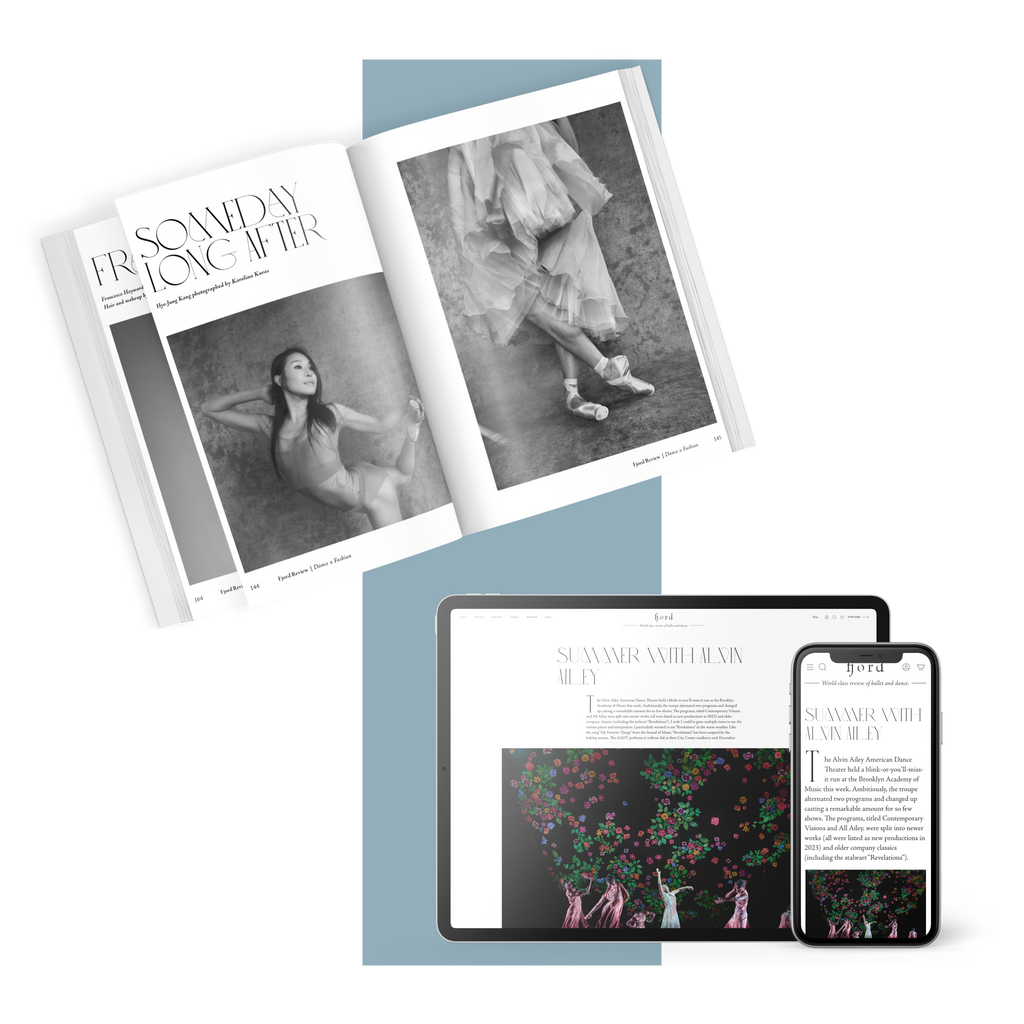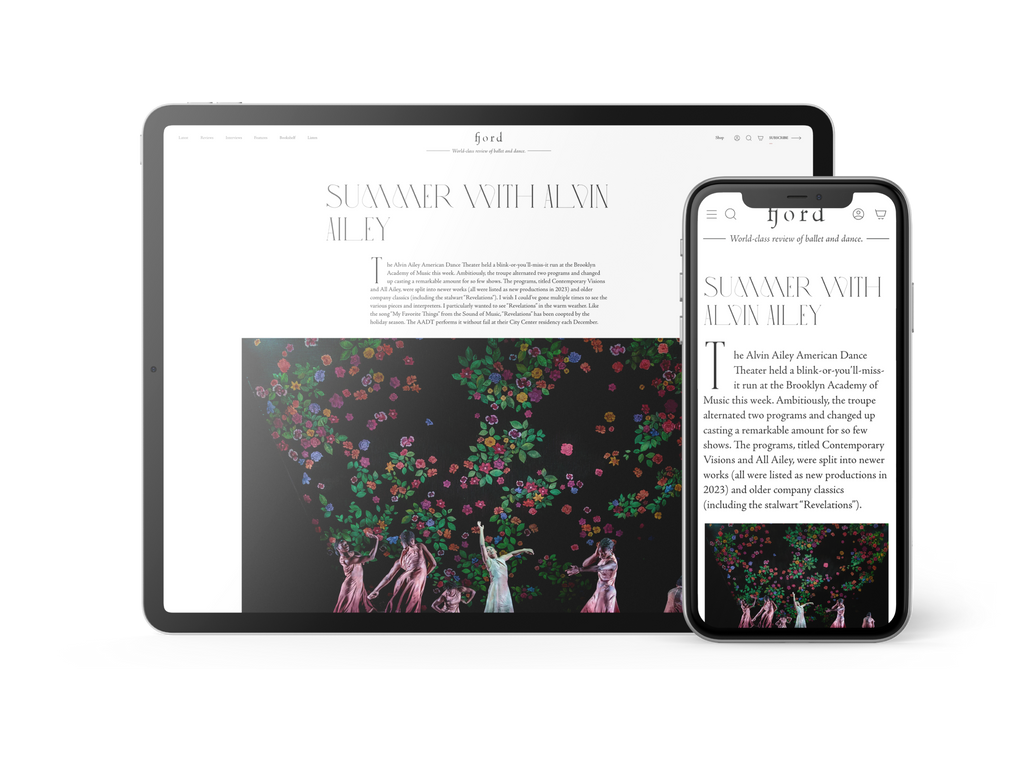Talent Time
It’s “Nutcracker” season at San Francisco Ballet—36 performances packed into three weeks—which means that the company is currently serving two distinct audiences.
Continue Reading
World-class review of ballet and dance.
Given the title, “Rivulets,” I’m thinking about water even before the stage lights go up. So I’m primed to view the opening tableau as a strand of bedraggled seaweed washed ashore: eight dancers, sprawled in a languid glowing heap of green, blue, and black. After a short period of stillness, the painterly tableau dissolves into distinct individuals who interact. They variously bow, lunge forward, recoil. Their heads jerk forward and yank back repeatedly. Tight turns open out, then reverse, as if tossed this way and that in the current.
Performance
Place
Words

“Rivulets” by Tere O'Conner. Photograph by Maria Baranova


“Uncommonly intelligent, substantial coverage.”
Your weekly source for world-class dance reviews, interviews, articles, and more.
Already a paid subscriber? Login
It’s “Nutcracker” season at San Francisco Ballet—36 performances packed into three weeks—which means that the company is currently serving two distinct audiences.
Continue ReadingLast week I caught up with choreographer Pam Tanowitz and Opera Philadelphia’s current general director and president, countertenor Anthony Roth Costanzo to talk about “The Seasons,” the company’s latest production premiering at the Kimmel Center’s 600-plus seat Perelman Theater on December 19.
Continue ReadingIf Notre-Dame remains one of the enduring symbols of Paris, standing at the city’s heart in all its beauty, much of the credit belongs to Victor Hugo.
Continue ReadingWhen dancer and choreographer Marla Phelan was a kid, she wanted to be an astronaut. “I always loved science and astronomy,” Phelan said.
Continue Reading
comments